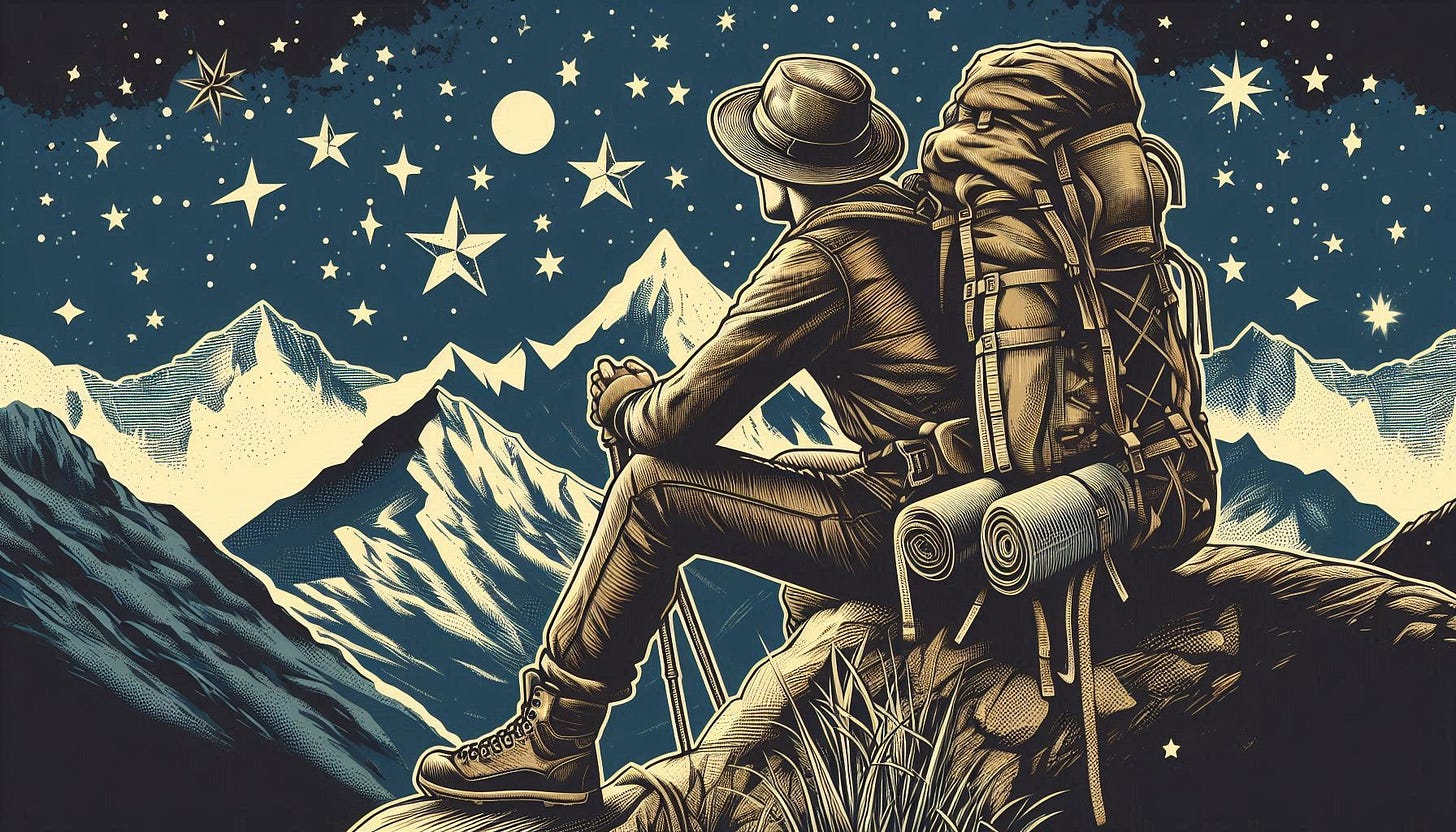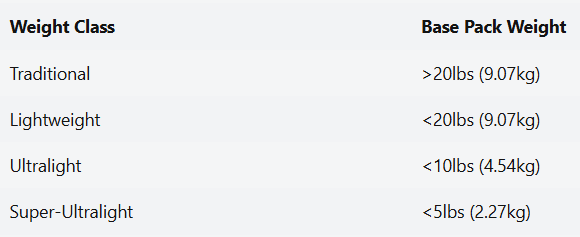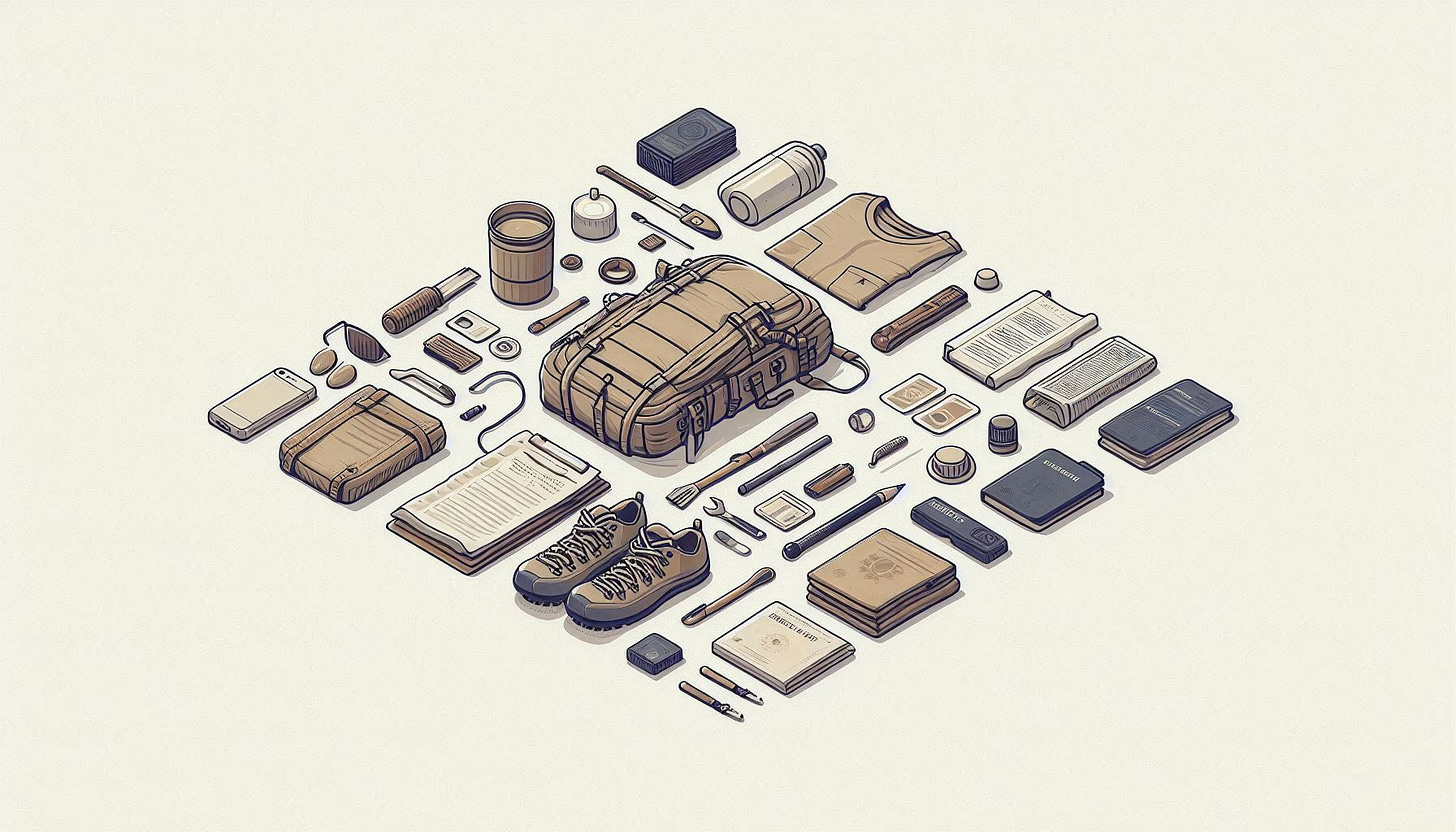TTF's Official Lightweight Backpacking Gear List
On the Top Outdoor Gear List Guides for Section or Thru-Hiking, the Freda Heights Pack Breakdown, & Ultralight (UL) vs. Lightweight (LW)
If you’re looking to lighten the load on your current outdoor gear list or build up the ultimate go-to hiking pack, you’re in the right place.
At Type Two Fun, we’ve spent years building a comprehensive gear list for multi-day hiking, camping, and hanging out in backcountry however long we deem appropriate before reentering society. The Freda Heights Pack has a detailed breakdown of everything you might need: the big three (pack, tent, and sleep system), cook/water systems, food storage, electronics, hygiene items, clothing and more.
This guide provides you with the following:
An innovative platform designed to streamline the process of creating and managing custom gear lists, with 3D design tools, itemized dropdown selections, metric and imperial measurements for weight, and real-time pricing estimates.
The Freda Heights Pack template, a completely customizable and detailed three-season gear list, plus more pack links tailored to winter conditions and low-cost ultralight finds
A complete review of the best, most affordable places for you to source or replace your gear, with links and expert tips from a chronic discount hunter
A comprehensive Type Two Fun overview on key considerations for your gear list, ultralight hacks, how to set your consumables up for success, the thru-hiker water filtration system, and frequently asked questions
The opportunity to message our expert hikers and TTF guides for assistance with finding the right gear or planning your next trip, with specialized recommendations and tips just for you
Before we get down to business, though, let’s consider the language being used here. Ultralight (UL) is defined as a minimalist approach to backpacking and outdoor gear, where the primary goal is to reduce weight without sacrificing safety or essential functionality. Lightweight (LW) is a class above ultralight; more on that in a second.
Let’s take a moment to discuss the UL community. Huddled mostly on r/Ultralight—as far as online presence is concerned—this subreddit has gone through several iterations and philosophical evolutions over the past decade and a half.
I am very happy they exist, and here’s why.
Towards the beginning of my backpacking journey, their Wiki quickly became one of my top-visited resources for fleshing out my own hiking gear. They have some really great information on there, and a lot of it at no barrier of cost to you. Read through for yourself, and soon you will be generating ideas of your own on how to shave grams based on your findings. This thread, for example, offers insights on exactly how many grams a dry “wet” wipe is versus a wet wipe. Being that baby wipes are 68.75% water weight, if you’re carrying 10-20 wet wipes at a time in your pack, the amount of weight difference can be substantial.
The UL community has more or less come to a consensus on the standards connected to their terminology, especially in online community forums like r/Ultralight. Below is their weight class approach, which deems any base weight under 10 pounds as truly “ultralight”, whereas a base weight between 10-20 pounds would be considered “lightweight”.
However, there have been rifts within the community. Take this post on the subreddit, from an experienced backpacker who sought out the online forum as early as 2018 in order to learn how to lighten up their pre-established gear:
The entire outdoor community is very often described as gatekeeping due to the financial, time, and access restrictions many people face in beginning to spend time outside. This [subreddit] is for everyone who has questions about ultralight backpacking (beginner or experienced) and the use of condescending and unhelpful comments towards beginners is actively preventing people from joining the community. — u/Kermitsewercide
And they’re not wrong. The ultralight philosophy has faced its share of criticism, causing ideological divides. Some recommendations from community members are just plain impractical (seasoned hikers refer to these as "stupid light" cuts that sacrifice functionality just to hit an arbitrary weight class), while others argue it’s prohibitively expensive to replace non-UL gear or purchase the majority of items from an ultralight outfitter.
So, the question is, what actually makes a hiker “ultralight”?
If you check this thread out, you’ll have a much better understanding of what the previous Reddit user meant about “gatekeeping”. From my understanding, the ultralight methodology was never meant to class people out of striving for a lighter pack. As the post points out:
… it isn't some arbitrary weight limit that makes you an ultralighter, it's about a philosophy to not carry the unnecessary and that in some conditions (and with some budgets constraints), it isn't always possible to get under those 10lbs, but that doesn't mean you can't call yourself an ultralighter. — u/ValdemarJoeJorgensen
Since you are a multidimensional person with your own requisites and considerations to make, when it comes to achieving your ideal gear list, you don’t need to play the comparison game with anyone. It is for that exact reason I’d like to clarify why I’m releasing my own gear list to my subscribers: to aid you in your endeavors as you build your own. Your gear list won’t look exactly the same as mine, and that’s by design; so I want to give you actionable opportunities to modify it however you want.
Below, I’ve provided every resource, recommendation, and product I can personally attest to as being fully functional and reasonable for any multi-day backpacking trip (including snow climates). With, of course, suggestions to customize.
This practical, lightweight outdoor gear list covers everything.
I put a ton of time into this resource and beginner ultralight guide, and I know for a fact it will help you if you start to spiral (just like I did) through analysis paralysis or flatten under the weight of dogmatic, arbitrary specifications. Not a single grain of rice was left out of the equation here.
I’ve also decided to share additional resources and sample gear lists from other expert hikers towards the end of this newsletter. One list keeps the total price under $1,000—practical, affordable, and effective. You’ll probably want to take notes!
P.S. — I do provide the option to make my “lightweight” gear list IMMEDIATELY drop down into the “ultralight” bracket with ONE simple item swap, detailed below.




